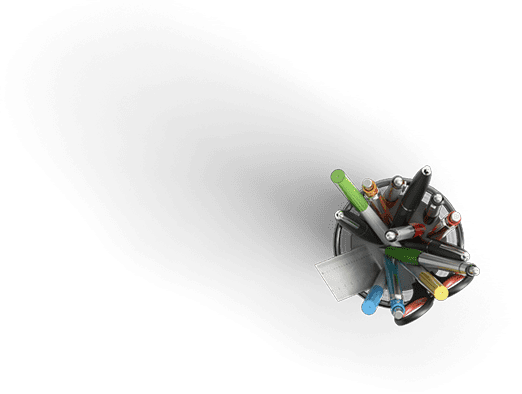OSU Renal Atrophy Presentation
Question Description
I’m working on a health & medical writing question and need support to help me learn.
A presentation over Renal atrophy.
Unformatted Attachment Preview
Transitional
Cell Carcinoma
Parker University
March 24, 2022
Clare Boudreaux
Background Info
idneys + Function
ilters blood + creates urine
rine Process
rine collects in renal pelvis
enal pelvis -> ureter -> bladder ->
urethral
2
What is it?
malignant disease in renal pelvis
ransitional Cells line the urinary tract
CC starts in these cells
Statistics
7% of all renal cancers are TCC
10% of upper urinary tract cancers are TCC
TCC is most common in the extrarenal part of the
pelvis
Distribution is fair
qual amount between left and right kidney
2%-4% can occur bilaterally
4
Pathophysiology
TCC makes up 90% of renal malignancies
Identical to urinary bladder cancer
ame risk factors
Field cancerization can occur
ue to exposure of urothelium to carcinogens
pread through urine
Spread to bladder
ue to field cancerization
20-48% of renal TCC spreads to bladder
Stages of
Renal
TCC
1
cancer has formed and has spread from
the tissue lining inside of the renal
pelvis to the connective tissue layers.
2
cancer has now spread to the muscle
layer of the renal pelvis
3
cancer has now spread form the muscle
layer to the layer of fat around the
renal pelvis
4
cancer has now spread to other areas
of the urinary tract
Renal TCC Descriptions
Localized
ancer is found only in kidney
Regional
ancer has spread to lymph nodes and blood vessels
Metastatic
ancer has spread to other parts of urinary system
Recurrent
CC has returned to renal pelvis or other parts of urinary
system
Etiology
he exact cause of TCC is idiopathic
Risk Factors
Smoking
ost significant risk factor for TCC
Exposure to Toxins
ong-term workers who are exposed to:
-chemicals, plastic industries, aniline dye, coal, tar,
asphalt, etc.
Overuse of pain medication
sually due to addiction
Chemotherapy
rug induced hemorrhagic cyst
yclophosphamide and ifosfamide
Epidemiology
Age
CC is rare before age of 40
he most common for TCC age is 60-70
Gender
en are infected 2 times more than women
Race
ncidence rate is higher in African Americans
Signs and Symptoms
Hematuria
Painful urination
Bladder Infections
Persistent back pain
Flank Pain
Acute Renal Colic
Extreme Fatigue
Labs
Urinalysis/Urine Culture
-more than 2-5 RBC per HPF is sign for further investigation
Fluoroscopically Guided Brush Biopsy
-80%-90% diagnostic accuracy
Urine Cytology
-a sample of urine is checked under a microscope for abnormal cells.
-TCC in the kidney may shed cancer cells into the urine.
Fluorescence in Situ Hybridization
-technique used to detect specific DNA sequence in chromosomes
Treatments
Nephroureterectomy
3urgery to remove the entire kidney, ureter, and bladder cuff
Systemic Chemotherapy
hemotherapy is a type of cancer treatment that uses one or more anticancer drugs as part of a standardized chemotherapy regimen.
Fulguration
urgical procedure using electrical current to destroy cancer cells by burning
them
Endoscopic Treatment
emoval of urothelial tumors of the upper urinary tract.
Complications
(occur after surgery)
Hemorrhage
Leakage of
Urine
Computed Tomography
T is useful in the diagnosis stage
ood at distinguishing between:
2enal stones vs. urothelial tumors
Ô scan with contrast. Black arrows point to a
mass that can be seen in the left renal pelvis.
This tumor was a high-grade urothelial
carcinoma invading subepithelial tissue.
Retrograde Pyelogram
(using X-ray)
PG can give a 90% accuracy
diagnosis
his RPG pyelogram revealed a large
filling defect in the upper moiety
extending to renal pelvis.
Sonographic Appearance
n ultrasound examination, transitional cell carcinomas appear as solid,
hypoechoic masses located within the renal pelvis, or a dilated calyx can be
seen
Ultrasound Images
Ultrasound Images
Ultrasound Images
The End
References
agi RP Jana, M. D. (2021, June 26). Renal transitional cell carcinoma. Practice Essentials, Pathophysiology,
Etiology. Retrieved March 18, 2022, from https://emedicine.medscape.com/article/281484overview#:~:text=Renal%20transitional%20cell%20carcinoma%20%28TCC%29%2C%20or%20renal
%20urothelial,the%20most%20common%20tumor%20of%20the%20renal%20pelvis.?
msclkid=169939baa6ca11ecacdb4b53eaace893
luorescence in situ hybridization (FISH). Genome.gov. (n.d.). Retrieved March 22, 2022, from
https://www.genome.gov/genetics-glossary/Fluorescence-In-Situ-Hybridization?
msclkid=28e435b6a96d11ecba32940fe69bd847
enal transitional cell carcinoma. Cancer Treatment Centers of America. (2022, March 10). Retrieved March
22, 2022, from https://www.cancercenter.com/cancer-types/kidney-cancer/types/renal-transitional-cellcarcinoma?msclkid=1859fcb9a8b311ecb72ed68a0c44763f
hat is renal transitional cell carcinoma? Latest Medical News, Clinical Trials, Guidelines – Today on
Medscape. (2021, June 26). Retrieved March 22, 2022, from https://www.medscape.com/answers/281484176922/what-is-renal-transitional-cell-carcinoma?msclkid=9836f208a8b511ecbc6a04db4181fa25
agi RP Jana, M. D. (2021, June 26). Renal transitional cell carcinoma workup: Laboratory studies,
intravenous urography, computed tomography. Renal Transitional Cell Carcinoma Workup: Laboratory
Studies, Intravenous Urography, Computed Tomography. Retrieved March 22, 2022, from
https://emedicine.medscape.com/article/281484-workup#c8
Purchase answer to see full
attachment

Have a similar assignment? "Place an order for your assignment and have exceptional work written by our team of experts, guaranteeing you A results."









